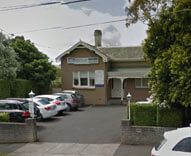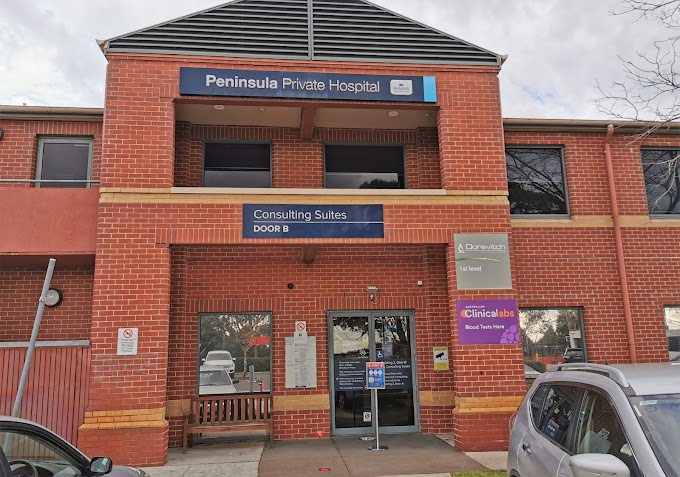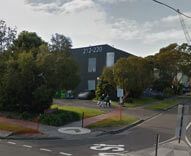Breast Augmentation
Dr David Ross believes that in making a decision whether or not to proceed with breast augmentation surgery the two most important factors to be considered are a natural looking result and the safety of the implanted devices in both the short and long term.
Breast augmentation is a common cosmetic surgery procedure with a high probability of a successful outcome. There are quite a number of different breast implants, used in breast augmentation, available for use in Australia. There are two main types, saline and silicone filled implants, each of which is known to have advantages and disadvantages. It is important to understand these differences when deciding on which implants you would be most comfortable with in the long term.
Silicone gel filled implants were originally available when implants were first on the market in Australia in the early 1970s. These were recommended as the gel contents most accurately resembled natural breast tissue. Unfortunately it subsequently became evident over the years that these implants had a high rate of complications over time, particularly with capsular contracture and implant leakage requiring a high reoperation rate. These implants were eventually removed from the market in almost all countries around the world in 1992 while they were more extensively studied to reduce the risk of complications. Following the implant moratorium of 1992 the implant manufacturers have modified the silicone gel implants to improve their long term outcomes. To decrease the consequences of silicone gel leakage the thicker shelled high cohesive gel implant was released that contains a much more dense gel content, which if leaked reputably would not dissipate through the natural breast because of its increased viscosity. This implant has now been available in Australia since 2001 and the results to this point with regard to outcome appear promising. Because of the improved results that have been seen around the world, the FDA in the United States reapproved some silicone filled implants to use in that country in 2010. However as there are still no significant studies verifying the efficacy of silicone gel filled implants, patients in the USA, who have undergone silicone gel implant breast augmentation are required to undergo second yearly implant screening with MRI scans of the breasts. Although most surgeons feel the new high viscosity implants are improved compared to the older types, they are heavier and feel less natural as a result of the changes.
Saline filled breast implants were developed in the mid 1970s as a result of concern regarding the consequences of leakage from silicone filled implants. These implants were considered safer for use as leakage of saline from the implant was compatible with the body contents. Other advantages of saline implants were that silicone gel bleed, that was thought to be responsible for many episodes of capsular contracture, need not occur with saline filled implants due to their increased compatibility with the body. Initially there was some concern regarding the natural feeling of saline filled implants, because of palpability and rippling when placed directly under a small breast. Certain changes in the implant manufacture and modification of technique in insertion have eliminated these concerns in recent years. Implant placement under the pectoralis muscle allows for a much more natural aesthetic result due to the increased coverage of the implant and further enhancement of the natural breast shape rather than simulation of the breast shape when the implant is placed in the submammary plane.
Saline implants have now been available for over 40 years and have never been removed from the market in any country because of safety concerns. Prospective patients should understand that the main reason for ongoing concern regarding silicone gel implants is that early outcome studies indicate a 24% 5 year reoperation rate when compared to a 13% 5 year reoperation rate for saline implants (nearly double)
It is for the reasons mentioned above that Dr Ross usually recommends the use of saline filled implants for the majority of women. He believes there are some women who may have an improved result with silicone gel filled implants, especially those who are very thin, less than 45kg or whose breasts have significant natural ptosis (or droop). Otherwise it is Dr Ross’s opinion that the increased safety of saline filled implants and equally natural result justifies their use in the majority of women.
There are a number of surgical approaches to breast augmentation surgery. The three main approaches of implant insertion are via the nipple (transareolar), under the breast (inframammary) and via the armpit (transaxillary). In most cases of primary breast augmentation Dr Ross favours the transaxillary approach for a number of reasons. Firstly the axillary approach does not leave any scars on the breast and is virtually imperceptible after a couple of months. Secondly it allows direct access under the pectoralis muscle for implant placement in the submuscular plane and use of the operating endoscope (camera) allows for complete creation of the implant pocket and correct implant positioning for a natural result. When using a saline filled implant this can be inserted deflated through small 2 cm incision and then inflated to the desired volume to achieve a natural enhanced result.
Although there are quite a number of techniques of performing breast augmentation Dr Ross believes that transaxillary endoscopic breast augmentation with smooth walled saline implants provides a natural enhanced breast shape with the safety and peace of mind that only saline filled breast implants can provide with minimal scarring.
Breast augmentation surgery is usually undertaken as a day surgery case, although some patients elect to remain in hospital overnight. The procedure is not excessively painful and after surgery oral analgesia is usually adequate. The procedure is usually performed under general anaesthesia and takes about 90 minutes to undertake. If the procedure is performed endoscopically through the axilla, usually drain tubes are not required, and the breasts are strapped to prevent further swelling and bruising. These dressings are left intact for 5-7 days for protection. Following this a supportive garment is worn for the next 3-4 weeks.
It is best to mainly rest for the week following surgery to decrease the risk of complications, particularly swelling and bruising. If this does occur it can result in additional scarring around the implants which may cause firmness or breast asymmetry. As your recovery proceeds you will be able to increase your activities, to allow increased mobility at one week, driving a car after one week, light exercise after four weeks with return to full activities in most cases by six weeks. During the early postoperative period Dr Ross will advise on implant displacement exercises if saline implants have been used to ensure the implants remain soft and natural appearing. With textured silicone gel implants, displacement is not recommended as the implants can become dislodged and malpositioned.
Please look at some of the outcomes of women who have recently undergone breast augmentation using this technique. If you would like to discuss this procedure in more detail or clarify any of the issues mentioned here please contact our office to arrange a consultation.
Click here for printable PDF version of article
- Should you put your implants under or over the muscle?
- What is the best procedure to correct my sagging breasts?
- Breast Reconstruction, Implant Breast Reconstruction, Autogenous (own tissue) Breast Reconstruction
- Breast Reconstruction in congenital breast asymmetry
- Secondary Breast Augmentation (Breast Implant Exchange)
- Breast Reduction




